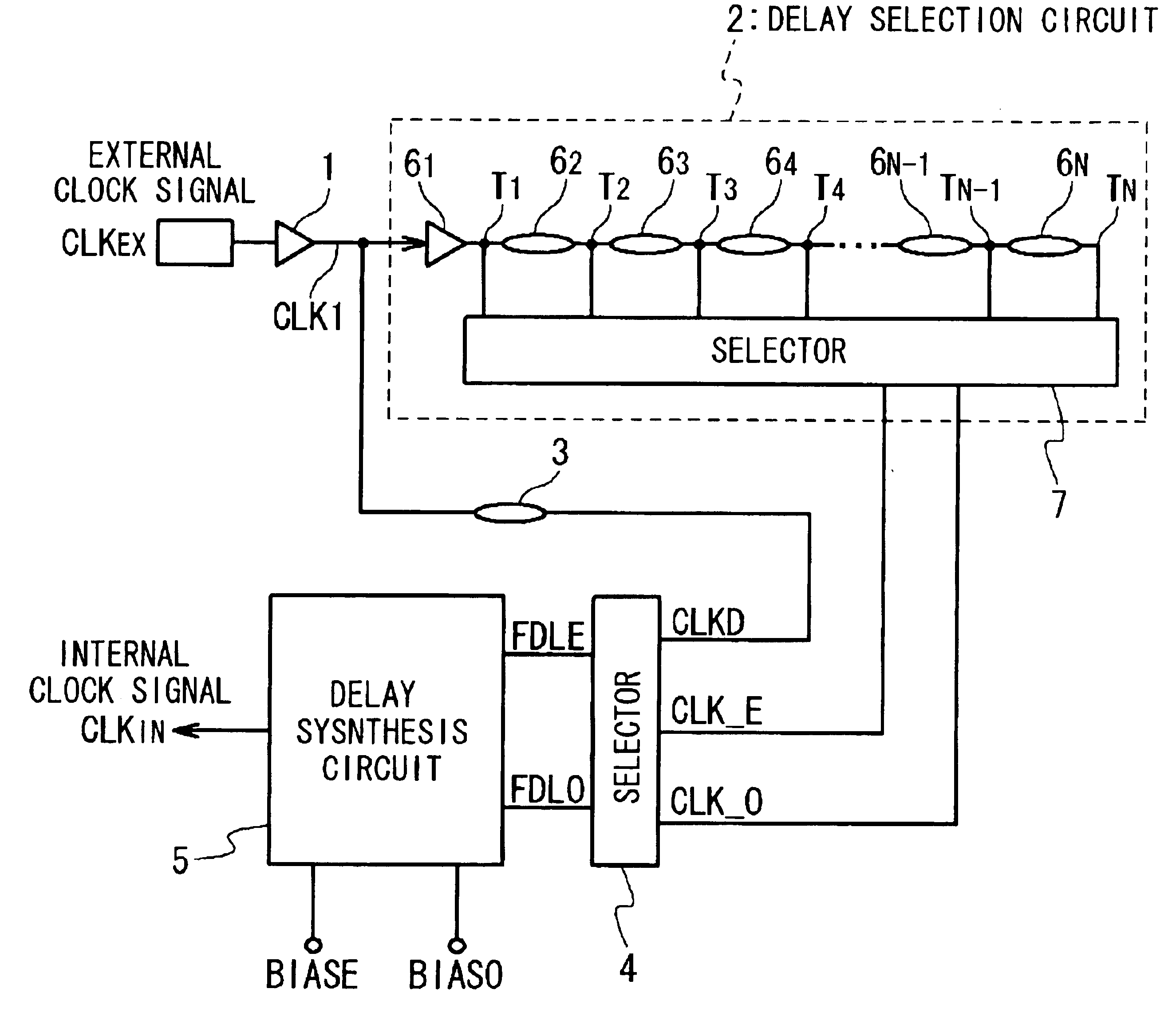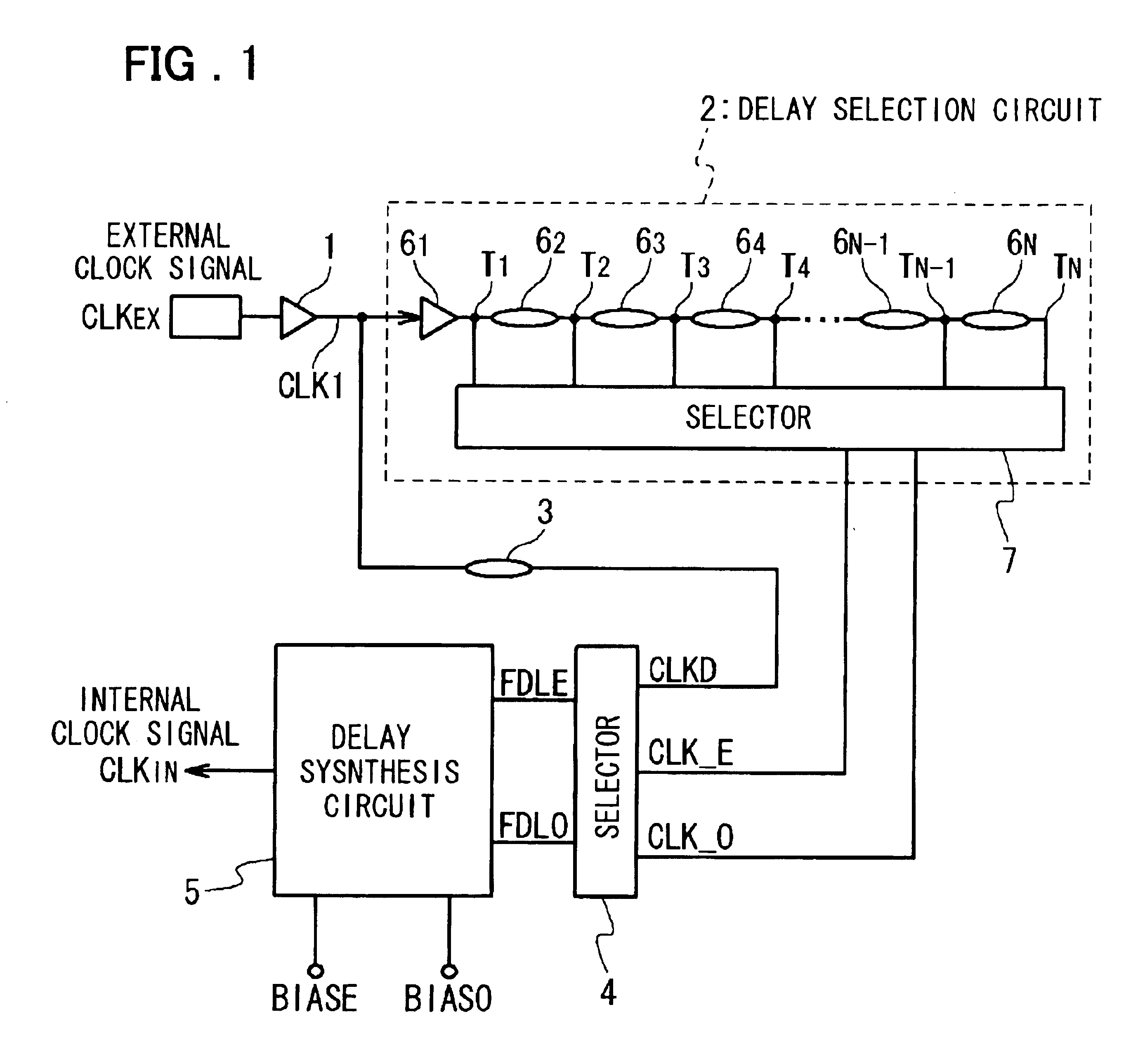DLL circuit
a dll circuit and delay lock technology, applied in the direction of generating/distributing signals, digital storage, instruments, etc., can solve the problems of large minimum delay time of dll circuit, hindering a faster operation, and unable to achieve the minimum delay time that can be achieved, and achieve small minimum delay time, and wide range of delay time adjustment
- Summary
- Abstract
- Description
- Claims
- Application Information
AI Technical Summary
Benefits of technology
Problems solved by technology
Method used
Image
Examples
Embodiment Construction
[0046]As is shown in FIG. 1, an embodiment of the present invention is a DLL circuit that delays an external clock signal CLKEX supplied from its outside by a desired delay time to generate an internal clock signal CLKIN. The DLL circuit includes an input buffer 1, a delay selection circuit 2, a delay device 3, a selector 4, and a delay synthesis circuit 5.
[0047]The input buffer 1 reproduces the waveform of the external clock signal CLKEX supplied to its input terminal to generate a clock signal CLK1. The input buffer 1 outputs the clock signal CLK1 to the delay selection circuit 2. The clock signal CLK1 is input to the delay selection circuit 2.
[0048]The delay selection circuit 2 delays the clock signal CLK1 to generate two clock signals CLK_E and CLK_O. The delay time of the delay selection circuit 2 (i.e. the delay time during which the clock signal CLK_E is generated from the clock signal CLK1 and the delay time during which the clock signal CLK_O is generated from the clock sig...
PUM
 Login to View More
Login to View More Abstract
Description
Claims
Application Information
 Login to View More
Login to View More - R&D
- Intellectual Property
- Life Sciences
- Materials
- Tech Scout
- Unparalleled Data Quality
- Higher Quality Content
- 60% Fewer Hallucinations
Browse by: Latest US Patents, China's latest patents, Technical Efficacy Thesaurus, Application Domain, Technology Topic, Popular Technical Reports.
© 2025 PatSnap. All rights reserved.Legal|Privacy policy|Modern Slavery Act Transparency Statement|Sitemap|About US| Contact US: help@patsnap.com



